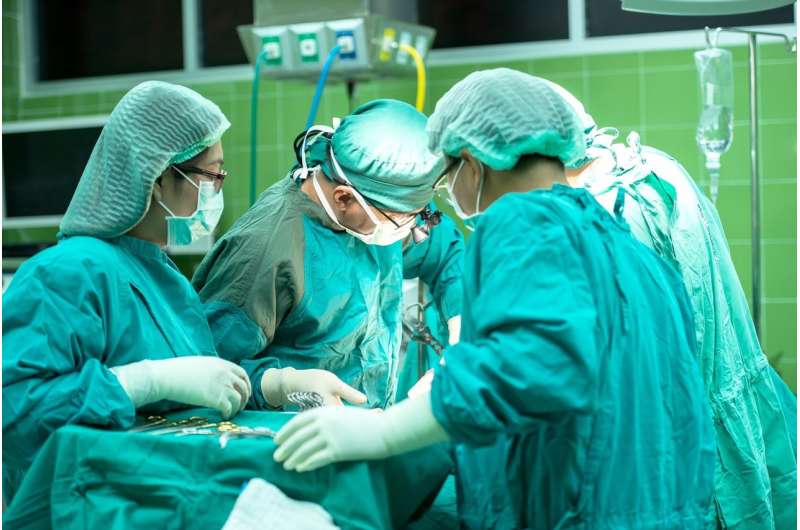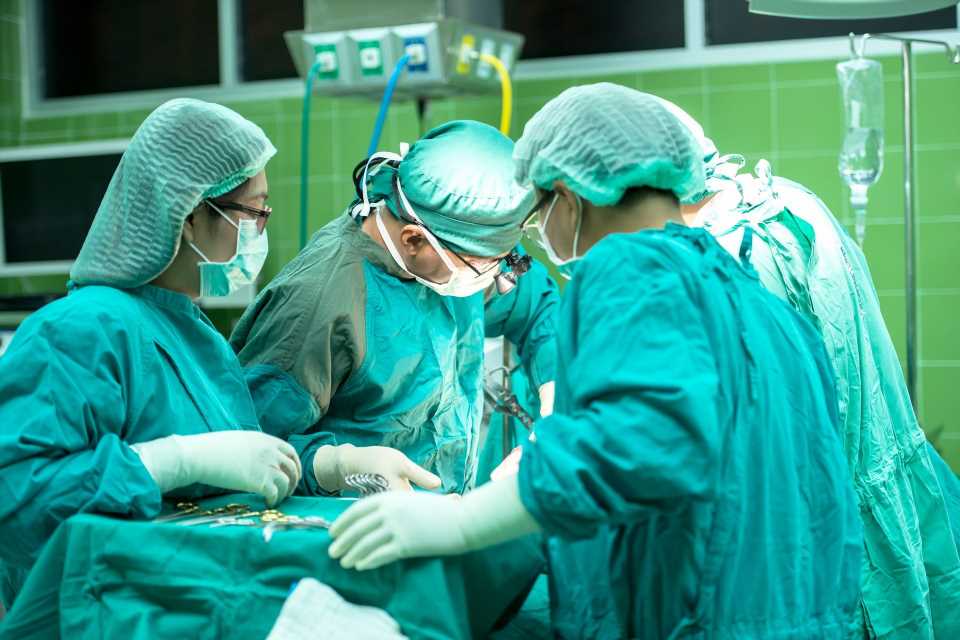
When uterine descent requires surgery, various procedures exist. A randomized clinical trial of the two most common uterus-sparing procedures in 26 Dutch hospitals has now been published in JAMA. The results show that a hundred-year-old method shows better results after surgery than a more recently developed method. This is a relevant finding because both in the Netherlands and worldwide more women undergo the more recent method. There is also a group of patients who benefit more from the newer procedure.
Uterus descent is a common condition. It is estimated that 40% of women over the age of 45 suffer from pelvic organ prolapse (among which uterine descent) to a greater or lesser extent. Not everyone experiences symptoms of prolapse descent, but every year it leads to a medical procedure for about 15,000 women.
Previous studies have shown that some patients benefit from vaginal support with a pessary. In case of an intervention, a choice can be made to remove the uterus or not. Researchers from Isala and Radboud university medical center, among others, showed that the procedure in which a healthy uterus is maintained gives better results than a procedure in which the uterus is removed. After five years, the women who underwent uterus-sparing surgery had a lower risk of recurrence of complaints than after removal of the uterus.
That study investigated the most recently developed and most commonly applied uterus-sparing surgery, the sacrospinous hysteropexy. The descended uterus is attached to a ligament of connective tissue in the pelvis with two non-absorbable sutures. However, gynecologists in some Dutch hospitals perform the much older Manchester procedure. They remove part of the cervix and suspend the ligaments around the uterus. This lifts up the uterus.
No international evidence yet
Until now, it was unknown which procedure provides the best results; there was no international scientific evidence. A large-scale study led by Radboud University Medical Center is now filling this gap. A group of 434 women who underwent the Manchester procedure or sacrospinous hysteropexy were questioned for symptoms. In addition, the researchers checked the anatomy after the procedures and whether there was a re-intervention. The result of the combination of these three factors shows that the women after the Manchester procedure had more often a successful surgery than the women after a sacrospinous hysteropexy. In both groups, the percentage of women who were satisfied with their surgery was similar, more than 80%.
Gynecologist and principal investigator Kirsten Kluivers of Radboud University Medical Center stated, “We assumed that there would be no difference. But there is. In the group that underwent the Manchester procedure, we saw no re-intervention for a recurrent uterine descent and less often a renewed descent of the bladder.”
Person-centered treatment
According to Kluivers, these results do not mean that women with a sacrospinous hysteropexy received poor treatment. It also does not mean the end of sacrospinous hysteropexy, because some patients benefit from this surgery. Kluivers advocates a personal approach: “We think that women with a more severe descent of the uterus in combination with a descent of the bowel may benefit more from the sacrospinous hysteropexy. If we recognize more of these subgroups, we can move towards more person-centered treatment.” These results mean that the Manchester procedure deserves more attention in the consultation with the patients.
The findings of this study are relevant to many women, hospitals and society. It contributes to better care for and treatment of women with uterine descent. And that is important, according to Kluivers. After all, pelvic organ prolapse can lead to unpleasant complaints, such as a heavy and dragging sensation in the vagina, urine loss and difficult bowel movements. “There are a huge number of women who suffer from these complaints. It is important that we can offer them the best care, and profound knowledge is of great importance for this.”
That is why we need this type of large-scale research projects, according to Kluivers. The researchers also calculated the cost of both procedures, with the Manchester procedure proving cheaper than the sacrospinous hysteropexy. Radboud University Medical Center carried out this study within a collaboration of no fewer than 26 centers, including Zuyderland, Isala and Maxima Medical Centre.
“These hospitals treat a lot of patients, which allowed us to follow a large group,” noted Kluivers, who expects hospitals to adopt the findings and adjust patient information accordingly. “In the future, we want to further sharpen the choices for the most person-oriented treatment.”
More information:
Rosa A. Enklaar et al, Manchester Procedure vs Sacrospinous Hysteropexy for Treatment of Uterine Descent, JAMA (2023). DOI: 10.1001/jama.2023.13140
Journal information:
Journal of the American Medical Association
Source: Read Full Article



